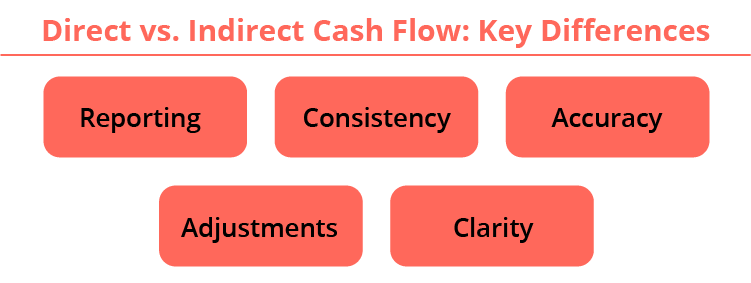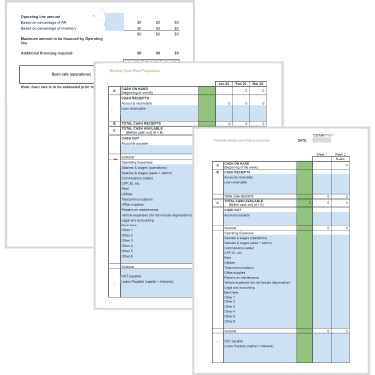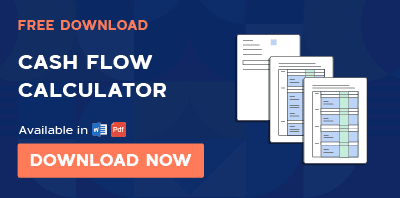Whether direct or indirect cash flow method, your cash flow statement may not always represent the information you want to share with your investors and other stakeholders. Still, it is one of the most crucial statements to financial reporting.
The cash flow statement is underestimated because of the lack of knowledge of the purpose it serves, and the cash flow method selected for the same. However, it is a primary piece of the puzzle to gain insight into your company’s liquidity.
And, how do you get the information you need?
It starts with having the correct procedure to provide the best cash flow statement for your company. That’s why you got to choose between direct and indirect cash flow methods.
In this article, we’ll go through what are direct and indirect cash flow methods and differences between the two.
What is a Cash Flow Statement?
A cash flow statement gives you an idea of how much cash was circulated in your business during a given financial period. It tells you how much your business received cash and how much cash was paid during a definite period.
It is a net cash profit you made in the financial year. Because a cash flow statement tracks an organization’s cash inflow and outflow, financial management needs to understand the company’s financial health.
Never take your eyes off the cash flow because it’s the lifeblood of business. – Sir Richard Branson, business magnate, investor, author, and philanthropist.
However, creating a cash flow statement that will appeal to your investors will depend on which cash flow method you select. Let’s deep dive into understanding what each method is and what purpose they serve.
Direct Cash Flow Method
Direct technique presents operating cash flows as a list of incoming and departing cash flows. The direct method, in essence, subtracts the money you spend from the money you receive.
It is one of the two methods used to create a cash flow statement for a business. Instead of converting the operational section from accrual to cash accounting, the statement of cash flows under the direct method employs actual cash inflows and outflows from the company’s operations.
The cash flow direct technique solely measures cash received, which is often from customers and cash payments or outflows, such as to suppliers. Organizations calculate the cash flow by netting the inflows and withdrawals.
The income statement method is another name for the direct approach.
The following are the three sections of a cash flow statement:
- Operating operations include the selling of goods or services, the purchase of supplies or materials, the payment of business expenses, and the payment of staff salaries.
- Investing operations, such as the purchase or sale of assets and the payment or collection of debts
- Financing activities involving stocks, bonds, or dividends are examples of financing activities.
The cash flow from operating activities is the only section of the statement of cash flows that will change in presentation under the direct and indirect methods.
Direct Cash Flow Method Example
Direct approach records the cash receipts and cash payments made during the financial period. A working example is presented below:
| Cash Flow From Operating Activities: | Amount USD |
|---|---|
| Cash received from the customers | 57,000 |
| Wages and salaries paid | (18,000) |
| Cash payments made to vendors/suppliers | (22,000) |
| Interest income and dividends received | 5,000 |
| Income tax paid | (9,000) |
| Interest paid | (3,500) |
| Net Cash Flow From Operating Activities | 9,500 |
Indirect Cash Flow Method
The indirect approach displays operating cash flows as a profit-to-cash flow reconciliation, and it signifies that you consider depreciation in your computations.
To calculate cash flow from operating activities using the indirect method, take the company’s net income and add or subtract non-cash items. Business owners use cash flow statements, investors, creditors, and stakeholders to evaluate a company’s performance.
It is way of presenting a company’s cash flow statement is based on net income or loss, with non-cash revenue and expense components added to or deducted from that figure, resulting in cash flow from operational activities.
The indirect technique displays the cash flow statement as a function of changes into current assets and liabilities.
Indirect Cash Flow Method Example
As mentioned earlier, we will start with the net income and reach the cash from the operating activities in this method. Let’s see an example of a cash flow from operating activities using the indirect cash flow method:
| Cash Flow From Operating Activities: | Amount USD |
|---|---|
| Net Income/Profit | 20,000 |
| Less: Increase in Accounts Receivables | (2,000) |
| Decrease in Tax Payable | (11,000) |
| Add: Depreciation | 3,500 |
| Decrease in Inventory | 1,500 |
| Increase in Accounts Payable | 900 |
| Net Cash Flow From Operating Activities | 12,900 |
Direct vs. Indirect Cash Flow: Key Differences
Below are the key differentiating points of preparing a cash flow statement using the direct or indirect method.

Reporting
The primary distinction between the direct and indirect cash flow statements is that operating activities generally report cash payments and cash receipts occurring throughout the business in the direct method.
In contrast, asset and liability changes in the indirect method are adjusted to net income to derive cash flow from operating activities.
Consistency
Many accountants prefer the indirect technique because it is easier to produce the cash flow statement with information from the other two typical financial statements, the income statement and the balance sheet.
Because most businesses utilize the accrual method of accounting, the data on the income statement and balance sheet will be consistent with this technique.
Accuracy
The indirect approach of preparing a cash flow statement takes a long time and has specific accuracy difficulties because such a statement uses many modifications.
The direct technique of generating a cash flow statement, on the other hand, remains the most powerful method of preparing a cash flow statement, and it takes less time to create the statement because of the adjustment and segregation of cash-based transactions from non-cash transactions are absent.
Based on this attribute, it generally gives a more realistic picture of the business’s cash flow status than the indirect technique of the cash flow statement.
Adjustments
The indirect technique is more complicated than the direct method, since it uses net income as the base and makes appropriate cash flow adjustments.
One of the modifications is the consideration of non-cash expenses. Depreciation, a non-cash item, is often added back to the net income in the indirect method, followed by additions and deductions resulting from changes in liabilities and assets.
In contrast, there are no such changes in the direct method in the direct approach. The cash flow from operations is generally prepared by accounting for cash receipts and payments in the direct method.
Cash receipts are typically documented as client receipts, whereas organizations record payments to suppliers’ employees and quote payments to cover taxes, interest, and other expenses.
Clarity
The Financial Accounting Standards Board (FASB) advises that organizations utilize the direct method to provide a more accurate picture of cash flows in and out of business. However, if the organization uses the direct method, it is still recommended to reconcile the cash flow statement to the balance sheet.
Conclusion
The corporation can use either a direct method or an indirect cash flow technique for reporting purposes. It depends entirely on the situation and the compliance criteria of the company. The popularity of the indirect way of cash flow generally outnumbers that of the direct cash flow method.
How Can We Help?
Upmetrics can help you create compelling financial statements for your business using an automated software tool that will be faster, easier, and more flexible.
Request your free demo and start the financial journey of your business with us.





